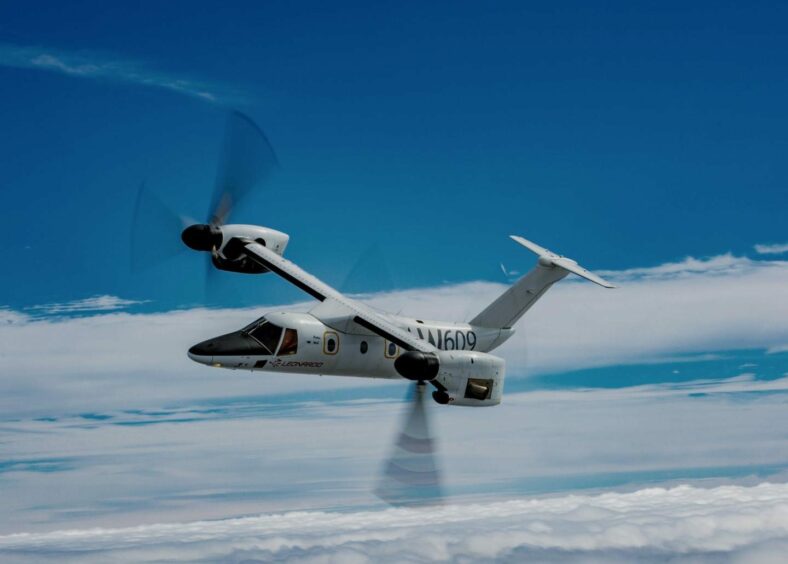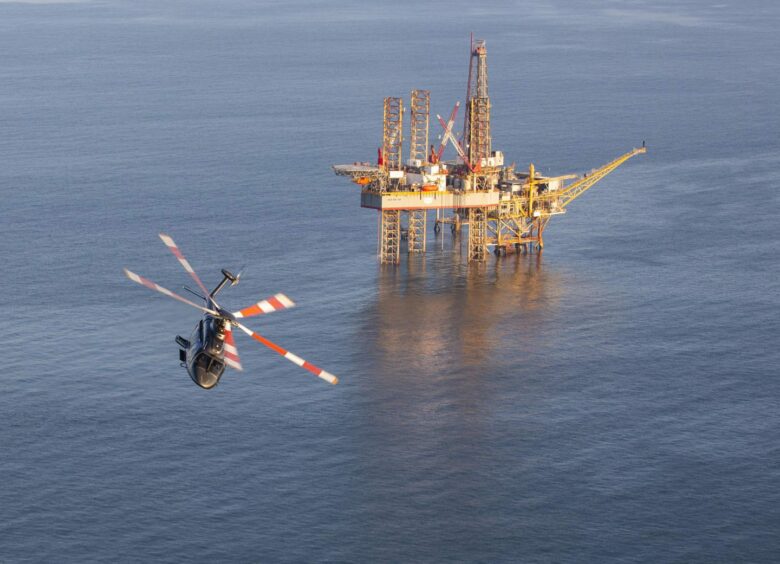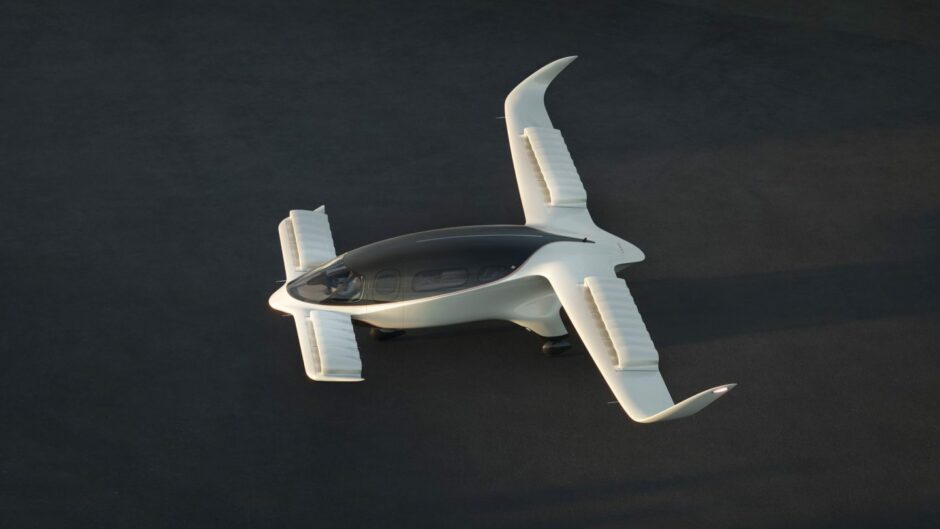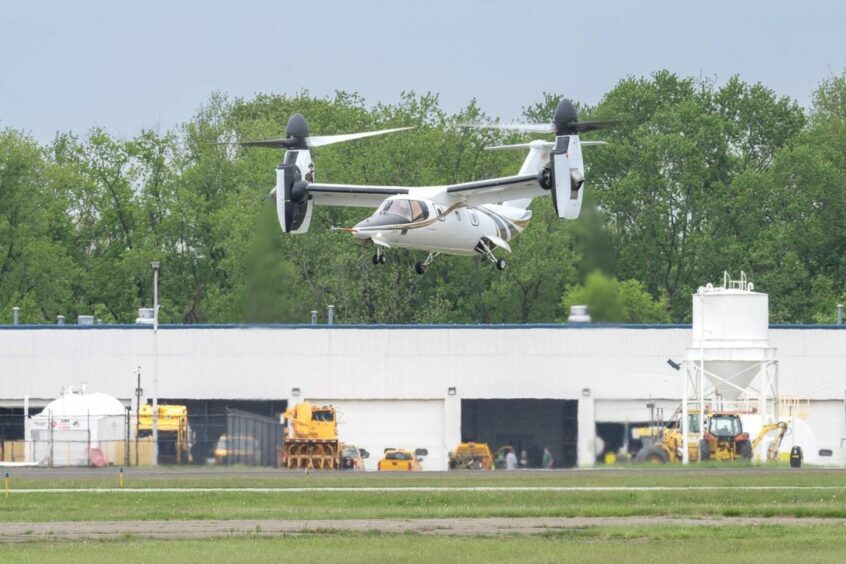
If the hype is to be believed, a new generation of vertical takeoff and landing (VTOL) aircraft is set to transform the landscape of aviation in the coming decade.
New conventional jet-powered VTOL airframes such as Bell’s 525 or the visibly futuristic AW609 tiltrotor – a civilian aircraft similar to the Bell Boeing V-22 Osprey – have been in development for some time.
Capable of carrying up to nine passengers in a pressurised cabin, the 609 has been designed for long range passenger transport, as well as offshore, emergency medical services (EMS) and search and rescue (SAR) work. (Indeed, Chevron staff flew on early demonstrator flights back in 2014, with the manufacturer keen to show off its offshore energy potential.)
Leonardo hopes to finally have the aircraft certified this year after years of delays and setbacks, including the crash of a prototype model which killed two test pilots.
But alongside familiar designs from incumbent manufacturers, the market is awash with start-ups pitching new electric (eVTOL) designs as the solution to urban and regional passenger travel, ride-sharing and cargo transport.
For now, the majority of these airframes are test prototypes, many of which are some way from formal certification. However, even in their early incarnations they have caught the attention of aviation service providers, many of whom are keen to explore the potential applications for their current operations – including oil and gas.
Bristow in particular is keen to appear forward-thinking, having signed firm and optional contracts with the likes of German eVTOL innovator Lilium and the US’ BETA Technologies.
The former is developing a craft billed as the world’s first eVTOL jet, based on a proprietary “ducted electric vectored thrust (DEVT)” technology, using electric jet engines integrated into the wing flaps. The firm is currently developing an aviation battery system which it says will support flights of up to 155 miles.
Under an MoU signed in July, Bristow will have the option to purchase 50 Lilium jets in addition to providing maintenance services for the company’s launch network in Florida, and other future US and European markets.
Meanwhile, BETA’s ALIA will have a maximum range of 250 nautical miles and is designed to carry over 600kg of payload – or around six people including a pilot. With a 50-foot wingspan and a carbon-fibre fuselage, the aircraft uses has four horizontally mounted rotors that provide vertical lift and a single propeller in the rear to propel the aircraft forward.
Bristow has committed to purchasing five of these aircraft, with an option to take an additional 50 at a later date.
Pushing the limits
With a wealth of new technology inbound, what then is the outlook for these technologies in the North Sea? Steve Robertson, founder of Air & Sea Analytics, is sceptical.
“I think realistically that the helicopters flying out of Aberdeen in 10 years’ time will almost certainly be exactly the same types of helicopters that are flying there today. It’ll be the S-92, the H175 and perhaps other new models such as the AW189 and Bell 525,” he told Energy Voice.
Although he could foresee greater take up in areas like the Gulf of Mexico, where trips to smaller near-shore platforms in benign weather conditions are an achievable proposition over the medium term, the nature of North Sea operations is likely to preclude much take-up of radical new technologies.
“You could argue that the North Sea pushes the limits of what we have already and that’s why we’ve got the heaviest, most technically advanced aircraft flying here – because it’s the most demanding sizable market that exists in in the world,” he added.
“There’s nothing else in the pipeline that can do the work those aircraft do.”
Looking specifically at electric-powered flight, Mr Robertson was unconvinced that conventional capabilities could be matched in the short term, noting that current airframes in development don’t have “anywhere near the payload or the range” to compete with existing aircraft – at least in the oil and gas sector.
“Where the market gets really interesting is when you start talking about cargo transfer, and particularly when you get into the offshore wind market,” he continued. “I think the first thing we’ll see in the North Sea is the transport of cargo with eVTOLs and the transport of cargo to wind farms will be probably the most attractive of the initial applications.”
While the wind industry has, in general, preferred vessels to aircraft for the servicing of wind farms and infrastructure, Mr Robertson believes the appetite for eVTOL may increase as operators look to further reduce the emissions impact of their operations.
Mission ranges are short enough to enable the switch, and aircraft may also be able to reach sites faster and more predictably – even through metocean conditions that would inhibit crew and cargo transfer by ship.
These developments are particularly advantageous when twinned with advances in remote and unmanned flight.
“That’s where the market is going to go. Certifying aircraft to carry people takes a lot of time, but certifying aircraft and developing drones to carry cargo is a quicker route to market.”
“There are still hurdles to jump through, but you’re starting to see eVTOL aircraft coming through that can carry 100 kilos, maybe even 300 kilos in the near future. That starts to get quite attractive, particularly for offshore wind operators,” he added.
Tech investment
As for more futuristic conventional jets such as the AW609, despite take-up by operators like Bristow, Mr Robertson was similarly unconvinced that the North Sea would provide a suitable testbed.
He suggested the aircraft provided “a very specific mission profile” which would likely suit it better to medical evacuations than regular passenger transport. Moreover, even though the design is approaching certification it will be some time before manufacturing and widespread adoption pick up.
“You can have an aircraft that takes 10 years to develop and get into market – and you then may well spend the first four years, five years working through maturity programs to bring the aircraft up to its full capability,” he said.
Meanwhile, low commodity prices and activity have meant the appetite for ordering new oil and gas aircraft and investing in new technologies over the last five years has been “very, very low,” he added.
That is now beginning to bite as global activity ramps up, with Air & Sea recently warning that despite historic oversupply, there may only be two dozen available S-92s in the global oil and gas sector, and that out-of-work aircraft are likely the “only available real solution” for plugging the gap as offshore crew transfer demand rises.
Even so, Mr Robertson does not expect this to prompt a speed-up in technology adoption.
“For the current markets at the moment the technology changes are not going to be about using different aircraft, it’s going to be about applying new technology to the existing aircraft: more modern gearboxes, more modern avionics systems, things that improve the overall efficiency and safety of the existing aircraft,” he suggested.
“But I think we’re at an inflection point in the market where that could change, and particularly as we run low on spare capacity, it will force or force operators to look at other options.”

 © Supplied by Lilium
© Supplied by Lilium © Supplied by BETA Technologies
© Supplied by BETA Technologies © Supplied by Leonardo
© Supplied by Leonardo